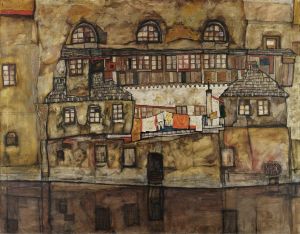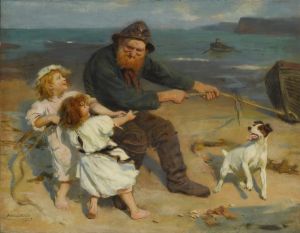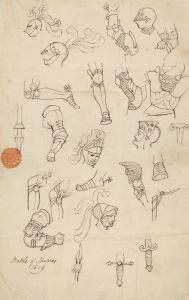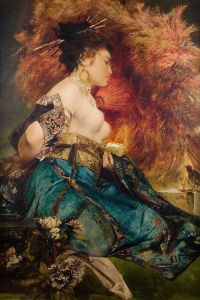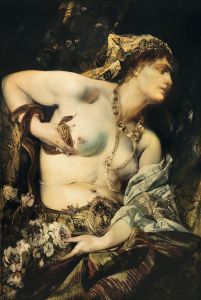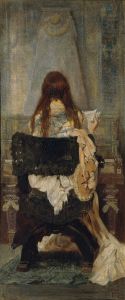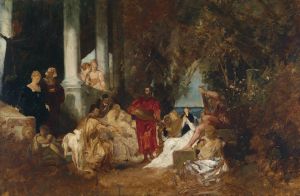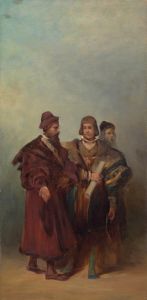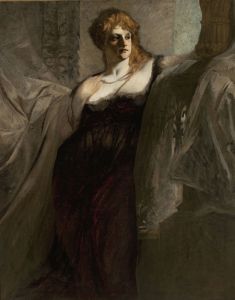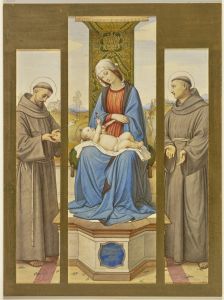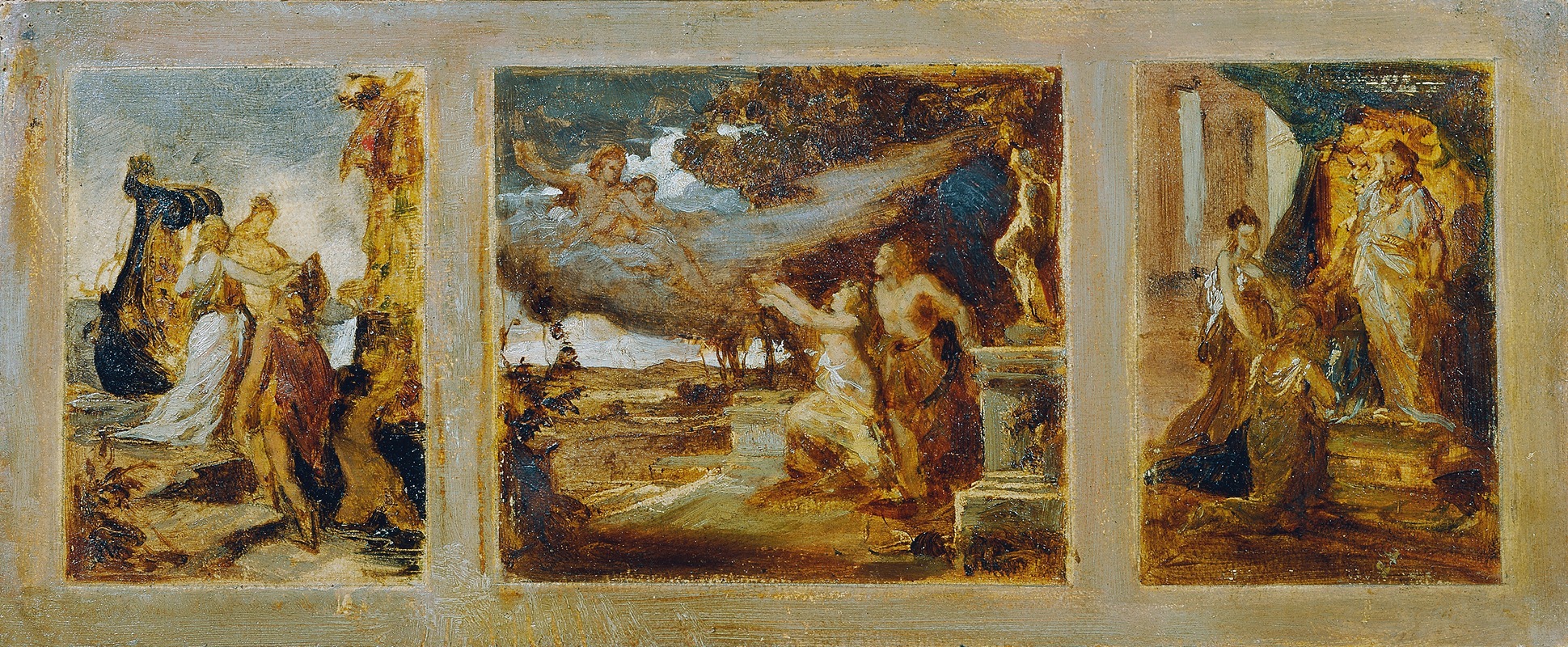
Skizze für ein Triptychon mit mythologischen Szenen
A hand-painted replica of Hans Makart’s masterpiece Skizze für ein Triptychon mit mythologischen Szenen, meticulously crafted by professional artists to capture the true essence of the original. Each piece is created with museum-quality canvas and rare mineral pigments, carefully painted by experienced artists with delicate brushstrokes and rich, layered colors to perfectly recreate the texture of the original artwork. Unlike machine-printed reproductions, this hand-painted version brings the painting to life, infused with the artist’s emotions and skill in every stroke. Whether for personal collection or home decoration, it instantly elevates the artistic atmosphere of any space.
Hans Makart was an influential 19th-century Austrian painter known for his historical and allegorical paintings, as well as his role in shaping the visual culture of Vienna during his time. One of his works, "Skizze für ein Triptychon mit mythologischen Szenen" (Sketch for a Triptych with Mythological Scenes), reflects his fascination with grand historical and mythological themes.
Makart was born on May 28, 1840, in Salzburg, Austria. He studied at the Academy of Fine Arts in Vienna and later in Munich, where he developed his distinctive style characterized by vibrant colors, dramatic compositions, and a penchant for theatricality. His works often depicted historical, biblical, and mythological subjects, which were popular among the European elite of his time.
"Skizze für ein Triptychon mit mythologischen Szenen" is a preparatory sketch for a triptych, a three-paneled artwork, which was a common format for altarpieces and large-scale paintings. Although the final triptych itself may not have been completed or may not have survived, the sketch provides insight into Makart's creative process and his approach to mythological storytelling.
In this sketch, Makart explores mythological themes, which were a recurring subject in his oeuvre. Mythology provided a rich tapestry of stories and characters that allowed Makart to showcase his skills in depicting the human form, elaborate costumes, and dynamic compositions. His work often drew from classical mythology, which was a popular source of inspiration during the 19th century, as it resonated with the Romantic and Neoclassical movements that valued the grandeur and drama of ancient tales.
Makart's sketches, including this one, were known for their fluidity and expressiveness. They served as a foundation for his larger works, allowing him to experiment with composition, color, and form. His ability to convey movement and emotion in his sketches was a testament to his mastery of the medium and his understanding of the human figure.
The influence of Makart's work extended beyond his paintings. He was a central figure in the cultural life of Vienna, and his style, known as the "Makartstil," influenced architecture, interior design, and fashion. His opulent and theatrical approach to art was reflected in the lavish events and exhibitions he organized, which were attended by the Viennese elite and contributed to his reputation as a leading artist of his time.
Makart's legacy is evident in the way he shaped the aesthetic sensibilities of his era. His work, including "Skizze für ein Triptychon mit mythologischen Szenen," exemplifies the grandeur and drama that characterized the art of the late 19th century. While specific details about this particular sketch may be limited, it remains an important piece in understanding Makart's artistic vision and his contribution to the world of art.
Hans Makart passed away on October 3, 1884, in Vienna, but his influence continued to be felt in the art world. His ability to blend historical and mythological themes with a unique sense of style and drama ensured his place as a significant figure in the history of art.






